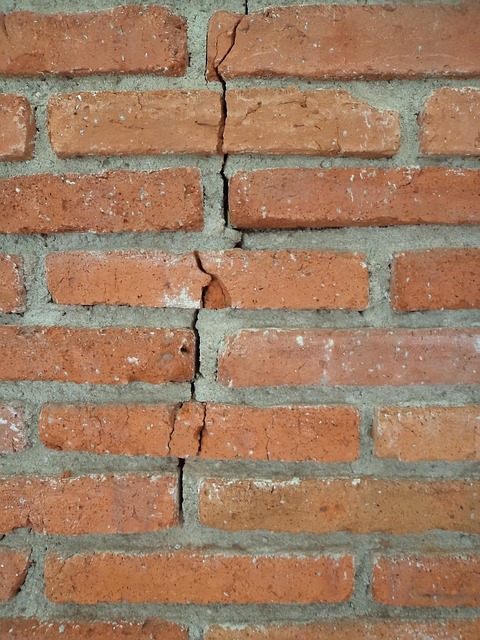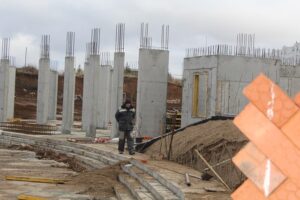Foundation reinforcement is crucial for maintaining older homes' structural integrity, addressing issues like settling, cracks, and uneven floors. Foundation Solutions offer various techniques, from steel reinforcement and underpinning to piering and chemical grouting, tailored to soil type, home age, and structural needs. Regular maintenance, including inspections, re-leveling, and moisture control, is vital to prevent costly repairs and ensure a stable home environment.
“Strengthen the foundation, secure a solid future. Home foundation reinforcement is an essential practice to ensure structural integrity and protect your investment. This comprehensive guide delves into the intricacies of foundation solutions, addressing common issues plaguing homes. From identifying problematic areas to exploring diverse reinforcement techniques, we provide insights on selecting the optimal repair method. Discover the benefits, considerations, and long-term maintenance strategies for a robust and stable home. Explore these foundation solutions for a safer, more secure living space.”
Understanding Home Foundation Reinforcement: The Basics

Understanding Home Foundation Reinforcement: The Basics
Home foundation reinforcement is a crucial aspect of structural integrity, especially for older homes or those built on unstable soil. It involves strengthening the foundation to improve its load-bearing capacity and stability, ensuring the safety and longevity of the structure. By addressing potential issues early on, homeowners can prevent costly repairs and serious structural damage in the future.
Foundation solutions come in various forms, including piering, underpinning, and slablift. Piering involves installing steel piers to transfer the load from the foundation to a more stable layer of soil below. Underpinning is the process of adding new supports beneath the existing foundation to stabilize it. Slablift, on the other hand, raises and reinforces the slab foundation to address settlement issues. Choosing the right foundation solution depends on factors like the type of soil, the age of the home, and the specific structural concerns identified during an inspection.
Common Issues Requiring Foundation Solutions

Many homes, especially older ones, may face structural issues that require attention to ensure the longevity and safety of the property. Common problems include settling, cracks in foundations or walls, uneven floors, and doors or windows that stick or do not align properly. These issues often arise due to various factors such as poor initial construction, changes in soil conditions, water damage, or natural disasters like earthquakes or floods.
Foundation solutions are crucial in addressing these challenges. Reinforcement techniques, such as steel beams, braces, or mesh, can strengthen the existing foundation and prevent further damage. For severe cases, complete foundation repair or replacement might be necessary, ensuring the structural integrity of the entire building. Foundation Solutions offer a range of specialized services tailored to different needs, providing lasting results for a stable and secure home environment.
Types of Foundation Reinforcement Techniques

When it comes to reinforcing a home’s foundation, several effective techniques are available, each tailored to specific needs and structural challenges. One popular approach is steel reinforcement, where high-strength steel bars or mesh are integrated into the concrete during construction or as a repair solution. This method significantly improves the strength and durability of the foundation, particularly in areas prone to seismic activity or heavy loads.
Another widely adopted strategy is the use of foundation solutions like pilings and underpinnings. Pilings, typically made of steel or concrete, are driven deep into the ground to provide additional support for the foundation. Underpinnings, on the other hand, involve installing new footings or adjusting existing ones to distribute the load more evenly, preventing settlement and cracks. These techniques offer flexible and long-lasting solutions, ensuring a stable and secure home structure.
Choosing the Right Foundation Repair Method

When considering foundation reinforcement, selecting the appropriate method is paramount. The choice between various foundation solutions depends on several factors, including the extent of damage, the type of soil, and structural requirements. For instance, some methods excel in addressing cracks and settlement while others are more suited for steep slope stabilization or underpinning.
Modern foundation solutions offer a range of options, from non-invasive techniques like piecemeal repair and chemical grouting to more intensive approaches such as deep foundation replacement or soil stabilization. Each method has its advantages and is tailored to specific needs, ensuring structural integrity and longevity for any building.
Benefits and Considerations for Foundation Solutions

Foundation reinforcement is a crucial aspect of ensuring the structural integrity and longevity of any home, especially in regions prone to seismic activity or heavy rainfall. Foundation solutions offer a range of benefits that address specific challenges faced by different types of homes. For example, steel reinforcement bars can be integrated into existing concrete foundations to increase their load-bearing capacity, making them more resistant to settling and shifting over time. This is particularly beneficial for older homes with crumbling foundations.
When considering foundation solutions, it’s important to assess the unique needs of your property. Factors like soil conditions, the age of the home, and local climate play a significant role in determining the most effective reinforcement method. For instance, in areas with high water tables, underpinning or piering may be necessary to raise the foundation off the ground and prevent water damage. Foundation Solutions specialists can provide tailored advice and implement advanced techniques to fortify your home’s base, ensuring its stability for years to come.
Long-Term Maintenance: Ensuring Your Home's Structural Integrity

Regular maintenance is key to safeguarding your home’s structural integrity, especially when it comes to the foundation. Over time, natural elements like extreme weather conditions, ground movement, and varying temperatures can take a toll on your home’s foundation. Implementing long-term maintenance strategies is essential to prevent costly repairs down the line. Foundation solutions experts recommend periodic inspections to identify any signs of damage or instability.
These inspections allow for proactive measures such as re-leveling, underpinning, or even structural repair work. By addressing foundation issues early, homeowners can protect their investment and ensure the longevity of their homes. Regular maintenance also includes monitoring water drainage around the property, preventing moisture intrusion, and addressing any signs of foundation settling or cracking.
